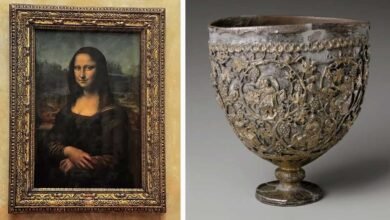
Archaeologists have made a startling discovery at the former Church of Saint John, now Saint Bavo’s Cathedral, in Ghent, Belgium. They have uncovered nine walls entirely composed of human bones, shedding light on historical burial practices and religious significance. The bones, dating back to the fifteenth century, were used for construction projects during the seventeenth or eighteenth century after a section of the church cemetery was cleared to accommodate new burials. This remarkable find offers valuable insights into the past, and future researchers aim to unravel the mysteries surrounding these bone walls.

A Glimpse into the Past
The site of Saint Bavo’s Cathedral has revealed a fascinating glimpse into history through these nine walls of human bones. The remains have been radiocarbon dated to the latter half of the fifteenth century, providing a link to the past when this area was a significant burial ground. However, it wasn’t until the seventeenth or eighteenth century that the bones were repurposed for construction projects, likely due to the need for more space as the cemetery expanded.
Unraveling the Purpose
As researchers examine this extraordinary find, questions arise about the purpose of these bone walls. Janiek De Gryse, the project leader from Ruben Willaert Restoration & Archeology/Decoration, believes that they may offer insights into the practice of clearing churchyards. While more than a thousand skeletons have been discovered in and around the church site, these walls stand as unique testaments to a bygone era.
Religious or Spiritual Significance?
One of the intriguing aspects of this discovery is whether the layering of bones held religious or spiritual significance. While the walls were undoubtedly functional in providing space for new burials, there could be deeper meanings behind their construction. As researchers delve deeper into the historical context, they seek to unravel the spiritual beliefs or rituals that might have influenced the creation of these bone walls.
Preserving Cultural Heritage
The find at Saint Bavo’s Cathedral underscores the significance of preserving cultural heritage. Archaeological discoveries like this not only offer glimpses into the past but also raise awareness of historical burial practices and architectural history. The meticulous work of restoration and archeology plays a vital role in safeguarding these unique remnants of the past for future generations to appreciate and learn from.
The discovery of nine walls made entirely of human bones at Saint Bavo’s Cathedral in Ghent, Belgium, has captivated the world with its historical significance. Radiocarbon dating places the bones back to the fifteenth century, while their repurposing for construction projects highlights the evolution of burial practices over time. As researchers continue to explore the purpose and spiritual significance of these bone walls, they emphasize the importance of preserving and learning from our cultural heritage for generations to come. This remarkable find serves as a poignant reminder that, indeed, if these walls could talk, they would share stories that bridge the gap between the past and the present.
Source: Interesting Engineering




